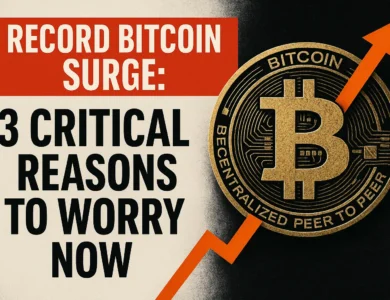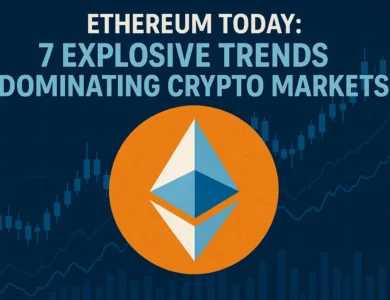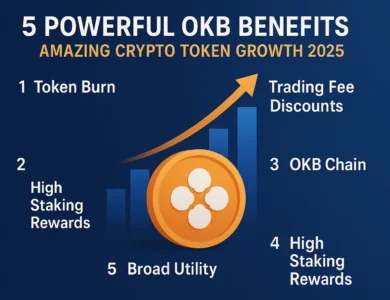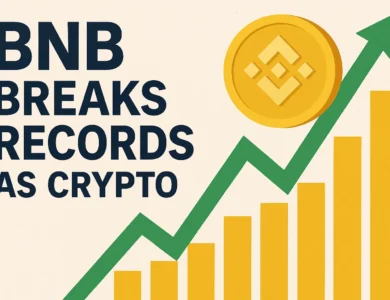
Crypto markets live and breathe macro headlines. Over the past week, the digital-asset complex has been jolted by U.S.–China trade developments, culminating in President Donald Trump acknowledging that very high tariffs on Chinese goods are “not sustainable.” For traders, that single word—unsustainable—matters. It signals potential policy flexibility after a bruising sell-off sparked by tariff threats and China-related export controls.
Digital assets, which often act like high-beta “risk-on” instruments, initially buckled when the tariff rhetoric intensified; now they’re reassessing the path ahead as the tone softens at the margins. Reuters reported on October 17, 2025, that Trump labeled the proposed 100% tariffs “not sustainable” while also indicating plans to meet China’s President Xi Jinping, an essential signpost for macro risk sentiment.
The prior escalation drove outsized volatility across Bitcoin and major altcoins, with multiple outlets chronicling rapid liquidations and steep price declines in the days surrounding the tariff shock. Even after the first flush lower, market commentary remained focused on whether the move was a one-off capitulation or the start of a more profound regime shift in crypto risk. Reporting from Coin Desk, Axios, The Street, and other market publications captured how quickly leverage unwound when the tariff threat hit the tape—and how fragile liquidity became amid uncertainty.
Now, with the White House hinting that very high China tariffs may not be sustainable, the crypto market’s narrative is changing from pure defense to cautious recalibration. In this analysis, we’ll unpack what the softer stance could mean for Bitcoin, Ethereum, and the broader altcoin universe; examine liquidity, derivatives, and stablecoin flows; and outline what to watch in the days ahead as policy signals evolve.
Why Tariff Talk Hits Crypto So Hard
Crypto as a High-Beta Macro Asset
Although crypto is a distinct asset class with its own adoption curve and on-chain fundamentals, price action often behaves like a leveraged bet on global growth and liquidity. When trade tensions rise, investors worry about slower growth, tighter financial conditions, and pressure on risk assets. That fear can drain liquidity from crypto order books, widen spreads, and amplify downside. The recent tariff headlines created exactly that environment: a jump in uncertainty, a flight to quality, and a scramble to de-risk high-volatility exposures.
In the immediate aftermath of tariff announcements and export-control headlines, Bitcoin and majors like ETH and SOL slid sharply, triggering billions in liquidations across leveraged positions. CoinDesk and TheStreet reported deep, rapid unwinds, indicating how crowded long positioning had become in the news. When crowded leverage meets macro shock, the path of least resistance is a fast gap lower.
The U.S.–China Trade Channel to Digital Assets
Tariffs affect more than container ships and customs receipts. They ripple through risk sentiment, dollar liquidity, and corporate investment plans. A harsher trade regime typically strengthens safe-haven demand and raises concerns about supply chains—from semiconductors to rare earths—denting risk appetite.
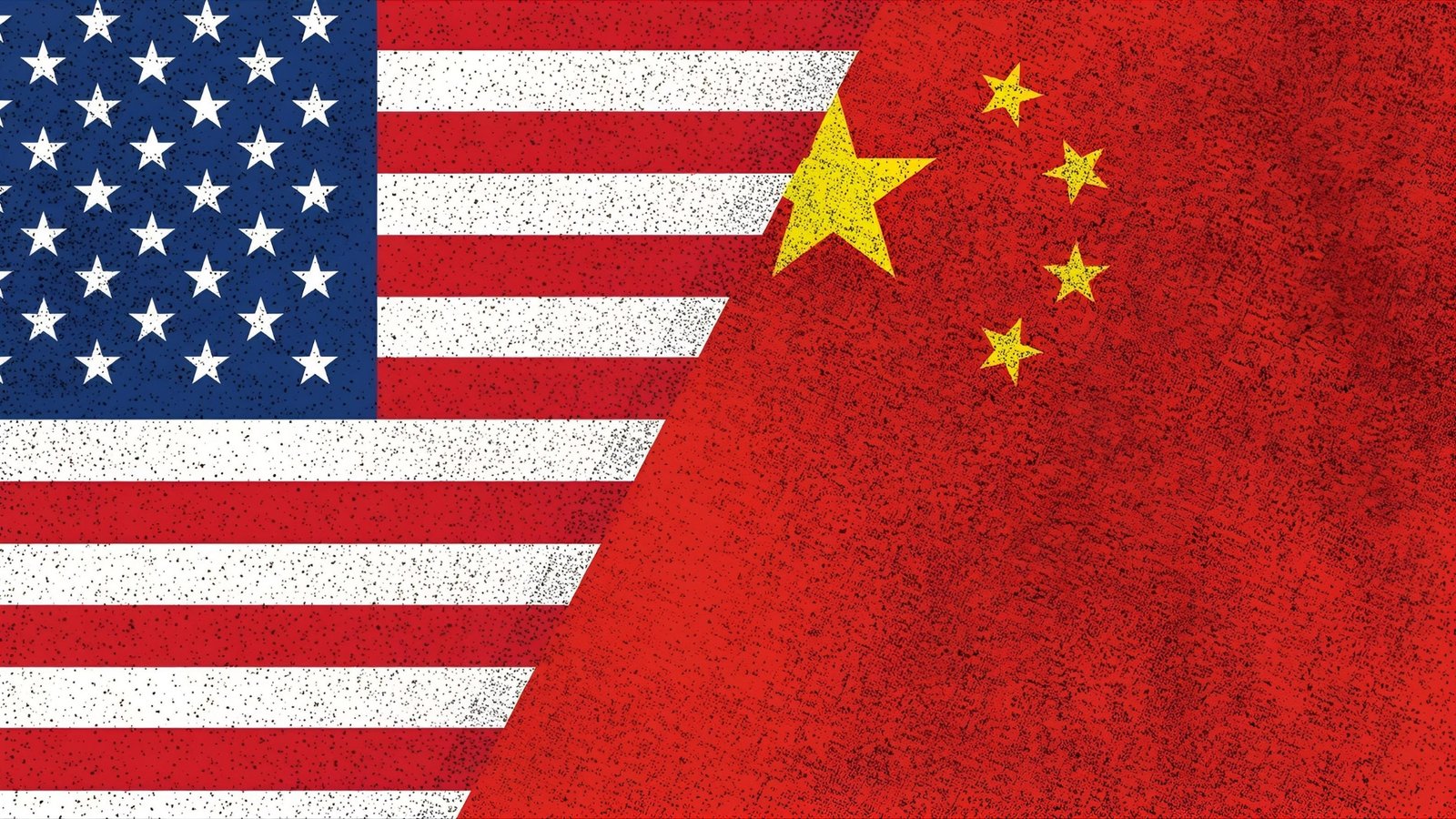
That’s why crypto, especially during periods of speculative positioning, can sell off alongside tech-heavy equities when tariff rhetoric intensifies. Axios noted a wave of forced selling and liquidations as traders scrambled to adjust to the tariff shock, illustrating the tight coupling between macro policy surprise and crypto market structure.
The Pivot Word “Not Sustainable”
From Maximum Pressure to Negotiating Flexibility
Markets respond to direction and tone, not just actions. When the President said the proposed 100% tariffs were “not sustainable,” it hinted at potential moderation or a willingness to recalibrate—especially in the context of a possible meeting with President Xi in the near term. For traders, that injects optionality: if the peak-tariff scenario is less likely, the distribution of outcomes for risk assets improves at the edges. Reuters highlighted both the “not sustainable” comment and the plan to meet Xi, which together helped stabilize broader markets on the day.
Why “Unsustainable” Matters for Bitcoin
If the policy destination were entrenched 100% tariffs with rising non-tariff barriers, the bear case for growth-sensitive assets would strengthen. Calling that path “not sustainable” reopens the bull case for a tactical relief rally—particularly in Bitcoin, which often rebounds first as funding normalizes and shorts take profit. As liquidity providers return and spreads tighten, intraday volatility can compress, creating a foundation for more orderly price discovery.
Price Action From Liquidation Cascade to Base-Building
The Downside Shock
In the days around the tariff announcements, crypto’s sell-off was swift and correlated with other markets. Coin Desk and other publications recorded Bitcoin breaking below key round-number levels while altcoins underperformed, classic stress signatures when leverage unwinds. The Street reported that more than $7.5 billion in positions were wiped out in about an hour at one point—evidence of cascading liquidations as stop orders and margin calls executed into thin books.
The First Bounce
The first bounce after a liquidation cascade is often mechanical: shorts cover, systematic flows rebalance, and some sidelined buyers attempt to “buy the dip.” Axios described how the more profound ramifications of the shock would depend on whether trading firms faced continued forced selling—a key medium-term determinant for any rebound’s durability. If the White House follows through on talks or tempers tariff scope, macro headwinds may ease, supporting a more sustained base-building phase.
Bitcoin Macro Barometer and Liquidity Anchor
Dominance Tells the Story
During macro stress, Bitcoin dominance typically rises as investors rotate from high-beta altcoins into the most liquid crypto asset. That pattern surfaced again amid the tariff turmoil. CoinDesk’s coverage emphasized the degree of fear across crypto as headlines rolled, with Bitcoin leading the defense as altcoins absorbed disproportionate damage. Dominance remains a proper top-down gauge for whether the market is in “risk reduction” or “selective risk-on” mode.
What to Watch in the Derivatives
Funding rates, futures basis, and open interest sketch the leverage map. After significant flushes, funding often turns negative, basis compresses, and open interest resets. If the tone around tariffs truly softens—consistent with the “not sustainable” line—watch for funding to normalize toward flat or slightly positive and for term basis (especially on major venues) to rebuild. That combination would suggest market-makers and directional funds are comfortable warehousing risk again.
Ethereum and the Altcoin Complex
ETH: Beta with a Twist
Ethereum usually trades with a higher beta than Bitcoin, but it also responds to network-specific catalysts, from L2 activity to staking dynamics. In macro-driven drawdowns, those idiosyncratic factors fade as top-down flows dominate. Once the dust settles, ETH tends to recover alongside BTC, with relative strength contingent on risk appetite. A credible de-escalation in tariff rhetoric could restore confidence in the crypto risk curve, improving ETH/BTC performance as investors inch back out on the spectrum.
Solana, XRP, and Mid-Caps
Altcoins suffered steeper percentage declines during the tariff shock, consistent with their lower liquidity and higher volatility profiles. When macro headlines improve, these same assets can spring back faster—but only if liquidity returns and market depth thickens. Traders should monitor spot–perp divergences and depth-of-book for signs that buy-side interest is returning on exchanges beyond Bitcoin and Ethereum. Early indications of stabilization often appear in narrowing spreads and rising resting bids on reputable venues after macro clarity improves.
Stablecoins, On-Ramps, and Flows
Flight to Cash-on-Chain
In stress events, stablecoin demand can spike as traders sidestep volatility. Rising stablecoin market caps and net minting can serve as a proxy for fresh dry powder. Conversely, when risk appetite returns, some of that capital rotates back into majors, supporting price recovery. Tracking stablecoin supply across top issuers, alongside net exchange inflows/outflows, offers a real-time lens into whether investors are gearing up to deploy.
CeFi, DeFi, and Liquidity Pockets
Liquidity isn’t uniform. Centralized exchanges, dominant perpetual venues, and leading AMMs respond differently to volatility. During the tariff-driven sell-off, global venues with deep derivatives books absorbed the brunt of forced deleveraging. As headlines improved, DeFi pools and on-chain order flow gradually normalized. A continued shift in tariff tone—especially if it culminates in dialogue between Washington and Beijing—would likely help restore liquidity across both CeFi and DeFi rails, reducing slippage and enabling more orderly execution.
The Macro Backdrop Beyond Tariffs
Dollar, Rates, and Cross-Asset Correlations
Crypto’s correlation with high-growth tech and long-duration risk assets tends to tighten when the U.S. dollar rises and interest-rate expectations shift to a hawkish stance. Tariff noise can feed into that channel by hardening inflation expectations and altering central-bank reaction functions.

If the perceived odds of entrenched 100% tariffs fade, the market could rethink the trajectory of inflation pass-through and growth, potentially easing pressure on risk assets. The softer tone reported by Reuters—paired with the prospect of leader-level talks—creates space for a less adversarial base case, at least for now.
Supply Chains and Rare Earths
Another wrinkle is China’s role in rare earths and critical inputs. Restrictions or counter-restrictions can weigh on global tech manufacturing—an indirect but essential factor for crypto, given its investor overlap with high-growth tech equities. Clarity on export controls, licensing regimes, and exemptions may shape how quickly risk sentiment heals. CoinDesk noted that China rebutted U.S. interpretations of its measures, framing them as lawful security steps with licensing pathways—nuances that could soften worst-case assumptions if they translate into more predictable trade practices.
Market Structure Lessons from the Liquidation Wave
Leverage Cuts Both Ways
The liquidation cascade underscored a structural truth: crypto’s reflexivity is often leverage-driven. When positioning is long and crowded, downside catalysts hit harder, liquidity disappears, and volatility spikes. Publications including Coin Desk and The Street tallied the wipeouts in real time, reinforcing how closely traders must watch funding metrics and open interest as macro catalysts. The next chapter—if “unsustainable” foreshadows de-escalation—could feature symmetrical dynamics on the way up as shorts are forced to cover.
The Importance of Venue Quality
During stress, counterparty and venue risk reassert themselves. Robust matching engines, transparent liquidation procedures, and deep insurance funds can cushion the blow of rapid de-risking. Traders should reevaluate venue concentration and cross-collateral practices after any macro shock. The goal is survivability: avoid single points of failure and keep dry powder for whipsaws when policy headlines flip.
Strategy Navigating a Fluid Policy Tape
Separate Headlines from Follow-Through
Headlines move markets; policy follow-through sets the trend. The President’s “not sustainable” remark is a meaningful signal, but traders should confirm it with subsequent actions—scope changes, timelines, and the tenor of any Xi–Trump meeting. If talks materialize and the tariff path looks more measured, the medium-term risk premium embedded in crypto could compress, allowing for higher prices on similar flows.
Build a Playbook
A sensible approach in headline-driven markets is to define scenarios:
1) De-escalation Base Case:
Tariff implementation is delayed, narrowed, or paired with carve-outs after talks. Macro volatility eases; BTC reclaims key levels as funding normalizes. Altcoins follow selectively, with quality large-caps outperforming first. Evidence to watch includes continued soft rhetoric and concrete indications of a bilateral meeting schedule—both hinted at in the Reuters reporting.
2) Stalemate:
Rhetoric cools, but policies grind forward without clarity. Markets chop, liquidity improves gradually, and range trading dominates. In this regime, focus on relative value—pairs trades, basis captures, and careful risk budgeting.
3) Re-escalation:
Tariffs go ahead at full size with additional non-tariff barriers. Risk assets sell again; dominance rises; stablecoin demand spikes. Traders revert to defense, tighten stops, and prioritize capital preservation. Signals could include hardened statements, cancellation of planned talks, or stricter export curbs—conditions referenced across the initial coverage of the tariff shock.
What the Next Two Weeks Could Bring
Watch the Diplomatic Calendar
Markets will key off whether and when leader-level talks occur and what preconditions are set. Reuters’ note that Trump still plans to meet Xi is the kind of scheduling detail that can stabilize risk if it sticks. Any confirmation of agendas—such as trade carve-outs, licensing frameworks, or mutual de-escalation steps—would be taken as bullish for Crypto Markets React to Trump beta in the short run.
Track Liquidations, Funding, and Flows
Quantitatively, keep an eye on:
-
Funding rates and basis: A grind back toward neutral often precedes steadier upside.
-
Open interest: Healthy OI rebuild without one-sided leverage is constructive.
-
Stablecoin supply and exchange flows: Net inflows to spot venues can foreshadow renewed risk-taking.
Outlets like The Street and CoinDesk have been quick to capture liquidation dynamics; continuing to monitor their dashboards and data-linked reporting can help traders adjust in real time.
Conclusion
The phrase “not sustainable” won’t erase a week of heavy losses or instantly refill thinned order books. But in macro-sensitive markets like crypto, nuance matters. A hint of flexibility at the top of the policy ladder can reset expectations, reduce implied risk premia, and coax liquidity back. If the U.S. and China move from maximalist posturing to practical engagement, crypto could benefit as the global risk complex steadies. Until there’s policy confirmation, the prudent path is disciplined exposure, scenario planning, and vigilant monitoring of leverage and flows. The following meaningful headlines—especially around any Xi–Trump meeting—may decide whether October’s shock becomes a tradable bottom or just the first act.
FAQs
Q Why did crypto sell off so sharply on the tariff headlines?
Digital assets behave like high-beta risk assets during macro shocks. The threat of extreme tariffs raised growth and liquidity concerns, prompting leverage to unwind across derivatives venues. Publications such as CoinDesk and TheStreet reported billions in liquidations as thin order books met forced selling.
Q What’s the significance of Trump saying high tariffs are “not sustainable”?
It signals potential flexibility. If 100% tariffs are unlikely to persist, the probability-weighted outlook for risk assets improves. Reuters also noted plans for a meeting with President Xi, which, if realized, could further reduce uncertainty and stabilize sentiment.
Q Which crypto sectors might recover first if tensions ease?
Historically, Bitcoin stabilizes first due to deeper liquidity and institutional participation. Ethereum often follows, and then higher-beta altcoins recover more selectively as liquidity returns and spreads compress. Monitoring funding, basis, and spot flows can help identify leadership early.
Q Could tariffs still go ahead and hurt crypto again?
Yes. If policy hardens, tariffs proceed at full size, or export controls tighten, risk assets could face renewed pressure. Axios warned that additional forced selling could emerge if trading firms encounter more stress, so headline risk remains elevated.
Q What key data should traders watch in the coming days?
Focus on derivatives metrics (funding rates, futures basis, open interest), stablecoin supply and exchange flows, and any concrete developments on a U.S.–China leader meeting. These indicators, together with policy follow-through, will help confirm whether “not sustainable” translates into a durable shift in market tone.
Also Read: Ethereum Today 7 Explosive Trends Dominating Crypto Markets



